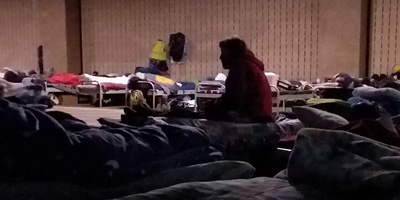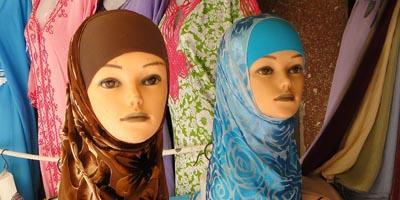People of all genders in the United States face severe barriers to obtaining health care, and people who can become pregnant are disproportionately likely to face barriers to reproductive and sexual health care. Unhoused people face particular risks and burdens; these have now increased as a result of the Supreme Court’s decision to overturn Roe v. Wade.
Callie Rutter and Deborah Kraft are both previously houseless. They are now members of Stronger Women United, a group of women with lived experience in housing displacement, as well as witnesses and allies, who are fighting for housing justice as a form of gender justice in California. For this article, Callie and Deborah described how unhoused people face a heightened risk of violence, unwanted pregnancies, unique barriers to abortion access, and extraordinary challenges when it comes to childrearing.
Sexual harassment and violence, and unplanned pregnancies
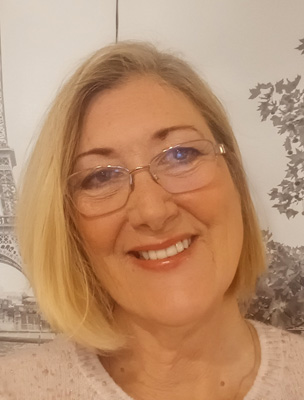
For over twenty-five years, Callie worked full time as an administrative assistant while raising her two children in Orange County, California. Then, for three years, she lived in shelters while battling cancer. She says that women without housing face a disproportionate risk of sexual violence. “Women on the street are often raped. One of the women that I lived with in a shelter, before finding a bed, slept in the park with her husband. Her husband got a citation for loitering one night and had to spend the night in county jail. She was left there alone, and she woke up in the morning with most of her teeth gone and all of her clothes missing or spread about. It was horrific.”
Deborah, who lived in homeless shelters for several years, agreed. “I had friends who were raped,” she said. “There are no words to express how having a home, having a lock on my door, protects me from sexual violence. When you are unhoused you have nothing protecting you. You have no walls or ceilings. You’re just like a walking vagina, walking around. I know that’s how some of the guys looked at it.”
Exposure to coercion/exploitation
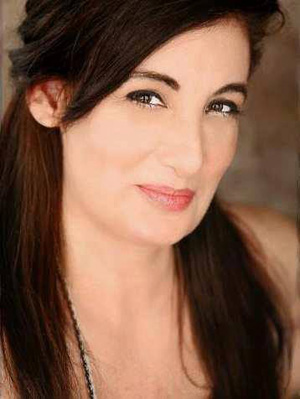
Deborah says that unhoused women are often exposed to high levels of sexual exploitation, harassment, and coercion, which can lead to unwanted pregnancies. “The staff were hitting on me constantly,” she said of one shelter. One staff member woke her up every morning by touching her without her consent and inquiring about her relationship status. Other staff members harassed her daily and made comments about her body. When asked if she could have spoken up about the harassment, she said, “There would have been retaliation. It would not have been welcome for me to say, ‘Hey, this is not appropriate.’ It’s like we were throw-away people.” The retaliation could include the withdrawal of resident privileges or eviction from the shelter.
For some women, these coercive strategies led to sexual relations, Deborah said when describing one of the shelters where she stayed. “The men who worked there were having sex with the women there. There is not an answer to that.”
Access to reproductive care
Studies confirm that unhoused people who are interested in obtaining contraception are confronted with significant barriers in their efforts to prevent pregnancies. First, as both Deborah and Callie noted, shelters often impose restrictions on residents’ ability to leave the facilities, which can impede access to reproductive health care. For example, curfews and other restrictions place profound limits on residents’ freedom of movement and make it much more difficult for them to keep appointments, visit walk-in clinics, or obtain benefits.
As Deborah recalled, in one of the shelters in which she lived, “I think the shelter’s curfew was that you had to be back by 7 pm. But I had some issues with my heart at a regular doctor’s appointment. My blood pressure was not stabilizing and my doctor wouldn’t let me leave. I had to try to calm myself down to get my blood pressure stable. But worrying about violating the curfew was giving me a panic attack, which raised my blood pressure even more. I called the shelter staff and told them what was happening and that I might not be back before curfew. But I still got push back and attitude from them. It would be, ‘Oh it’s getting close to 7:00 pm. Better hurry!’”
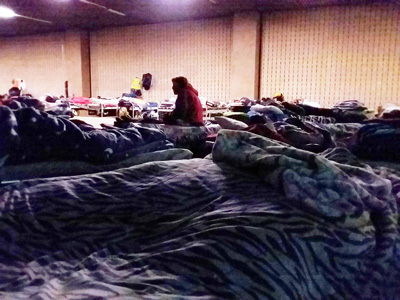
In addition to curfews, some shelters prevent unhoused residents from walking or biking to and from the shelter, in order to make unhoused people invisible to housed people in the surrounding neighborhood. One of the shelters that Callie stayed at included the following rule in a “shelter expectations” handbook: “In order to remain Good Neighbors, all guests are expected to use the provided shuttles or transportation on to and off of the property. We practice a strict no-walk-up policy. Guests are expected to remain on the property at all times unless when leaving for the day. All guests are allotted one exit and one entry per day, including guests who drive their own personal vehicles (unless under approved special circumstances).”
Residents must sign up in advance to board a shuttle to a designated drop-off location that can be miles away from where they need to go. In many cases, Callie said, “There are only enough spots for a fraction of residents who need to leave the shelter on a given day.” Moreover, the shuttles run on strict schedules that may not coincide with medical appointments.
According to Deborah, one of the shelters she stayed at felt more like a locked compound than a program. “The security guards were tall and big. They would have prevented me from leaving or they would have evicted me. There was a driving gate and a walking gate. And both were locked. You couldn’t go near those. Some people climbed over the walls. They were tall walls. Some people were caught and evicted and some were not. There was no other way out.”
A second barrier to obtaining reproductive health care, as Deborah noted, is that contraception is often not available in the shelters. “The shelters don’t provide you any care besides a rubber mattress and oppressive rules,” she said. A medical van made weekly visits to one of the shelters she stayed at but, astonishingly, the health care providers did not even inquire about the need for contraception. As a result, Callie said, “We don’t have access to the care that women need, in my opinion.”
“There should have been condoms in a bowl,” Deborah said. “The health care providers should have been asking, ‘Do you need birth control? There was absolutely not one discussion about birth control or STDs. The shelter was hyper-sexualized at the same time that nobody talked about it. It was taboo to talk about sex or contraception.”
She believes that this was because of the way unhoused people are viewed. “We’re definitely not thought of as sexual human beings because we’re not thought of as human beings.”
The extreme hardship that comes from living without housing and other survival resources presents a third barrier to obtaining reproductive health care. Callie says that for unhoused people who are engaged in a daily struggle to survive, reproductive health care can slide down the list of priorities. “Oftentimes, being unhoused, we forget to take care of ourselves, and with little access to things like a phone or an email account, keeping track of medical appointments and health information is limited and substantially difficult. Rescheduling is a nightmare.”
Deborah agreed. “You are stretching your brain cells and body just to survive that day. You’re not thinking about remembering to take a pill or make an appointment with your OB-GYN. You’re thinking about how you are going to eat that day.”
African Americans experience homelessness at a rate five times greater than whites.
Homelessness and poverty are connected, especially when poor people do not have the money for food, childcare and health care, let alone housing.
Access to Abortion
A number of factors increase unhoused people’s risk of unplanned and unwanted pregnancy, and as a result unhoused people rely heavily on abortion for reproductive healthcare. In the U.S., patients who identify as unhoused make up less than one percent of the population but 19% of the abortions performed at Planned Parenthood and other urban clinics.
As abortion access contracts or disappears across large swaths of the U.S., how will unhoused people who are pregnant be impacted? For one, those living in states that ban abortion will be forced to travel long distances and across state lines to access abortion care. Transportation is expensive and, since poverty is a primary driver of houselessness, they are disproportionately likely to lack the resources for travel.
When traveling long distances to seek abortion care, people may also experience harms, such as losing shelter spots, that only impact unhoused people. At one of the shelters in which Callie lived, the rules restricting absences stated that “Guests are expected to return each night before 9:00 pm unless allowed special circumstance by management (ex: for work or school). Guests are not allowed to miss two consecutive nights or more than two nights in any calendar month without clearing the absence with their Housing Navigator. Guests are expected to sign in on a daily basis. Guests may not sign in for others.”
As Callie noted, “If somebody were to seek out an abortion, they would risk losing their bed. You cannot leave a shelter for a day or two and expect to have your bed still there. You would most likely be out on the streets and then become a target for rape or assault.”
Because of these barriers, some unhoused people in states that have stripped away their reproductive health freedom could be more likely to seek abortion care in their communities. In some cases, they could face felony or misdemeanor arrests for accessing now-unlawful abortions. Having a criminal record can result in denial of subsidized housing and shelter spots and could increase the discrimination they face from landlords who are already wary of housing vouchers.
The barriers unhoused people face when seeking abortion care may also lead to delays, which, in turn, may result in complications that endanger the health of the person ending the pregnancy. After adjusting for race, substance use, mental health disabilities, and previous cesarean deliveries, one study found that people experiencing houselessness or housing instability experienced a heightened risk of abortion complications when compared to housed people. Unhoused people were more likely to delay abortion care until later in the pregnancy, which appears to contribute to their increased risk of abortion complications.
Disproportionate impact of unplanned children
Forced pregnancy, childbirth, and child-bearing impose unique hardships on houseless people, who, by definition, lack access to homes, money, and other material resources. Neither shelters nor unsheltered places are appropriate environments for raising infants and children, yet they may be the only options for unhoused parents. Too often, the government’s response is to remove the children from their parents instead of meeting the material needs of unhoused families.
One study found that childhood foster care is 34 times higher for families experiencing houselessness than the general population. In part, this high removal rate may be explained by enhanced scrutiny experienced by families living in shelters, which raises the likelihood that they will be reported to child protective services (CPS) agencies. A study in Alameda County found that half of the unhoused families living in shelters were reported to CPS at some point, although less than one-fifth of reports were ever substantiated. Similarly, a five-year birth cohort study in Philadelphia found that 37% of unhoused women who delivered live births had “some type of involvement” with CPS during the subsequent five years, compared to 9.2% of “low-income” and 4.0% of “other” families.
Unhoused parents can also be separated from their children if shelters do not accept families. Callie lived with an unhoused mother in a shelter that did not accept children. “She had a three-year-old son, and it was the only shelter she could get into. She was separated from her son through no fault of her own,” Callie said. “There are so many unhoused people, that they just don’t have room in the shelters, and though she did eventually get to visit her son, she had to wait weeks to take a bus off the shelter ground I can’t imagine anything more difficult than raising a child when you’re just trying to survive being unhoused and putting a child in foster care.”
Comments by the authors
Gabriela Tsudik is a student at the University of California, Davis. Eve Garrow is a senior policy analyst in the economic justice department of the ACLU of Southern California. Along with Deborah Kraft and Callie Rutter, they are members of the coalition Stronger Women United.
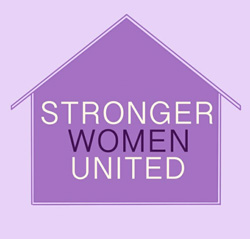
The U.S. Supreme Court’s decision to eliminate the right to abortion adds one more human rights violation to the violations that unhoused people like Deborah and Callie already endure. While the reversal of Roe v. Wade makes it more difficult for people in many parts of the nation to access abortion care, unhoused people who can become pregnant will experience these burdens and attendant harms in unique ways. As we argue in this article, they experience an alarmingly high risk of sexual violence, exploitation, and coercion and distinctive barriers to accessing contraception and abortion care. Put together, these challenges increase the risk that they will have unplanned and unwanted pregnancies. When they are forced to bear children, it is unlikely that the government will help meet their material needs. Rather, they experience an increased risk of having their children taken away or having to care for a child without a home.
The Supreme Court decision is the first in the nation’s history to summarily wipe out an established human right. Arguably, the harms and burdens that accompany the elimination of this right will fall disproportionately on unhoused people who are or may become pregnant.
The Supreme Court decision underscores the hypocrisy with which the United States approaches the rights of people who can become pregnant, including many cisgender women, some non-binary people, some intersex people, some Two Spirit people, and some trans men. For example, despite its claims as a defender of human rights, the U.S. is the only country out of 189 nations to have not ratified the Convention on the Elimination of Discrimination Against Women, a convention that, in part, deals with abortion rights.
According to the Robert Wood Johnson Foundation, “Health equity means that everyone has a fair and just opportunity to be as healthy as possible. This requires removing obstacles to health such as poverty, discrimination, and their consequences, including powerlessness…” As such, equitable access to reproductive healthcare will require advocates strategizing to preserve abortion access for all people to account for the particular challenges and needs experienced by unhoused people who can become pregnant. It also means that advocates must realize that fighting for the right to make autonomous decisions about one’s own body and reproductive functions should go hand in hand with the fight for other human rights, such as the right, recognized in the United Nations Universal Declaration of Human Rights, to “a standard of living adequate for the health and well-being of [themselves] and of [their] family, including food, clothing, housing and medical care and necessary social services…” Until these affirmative human rights are enforced, unhoused people who can become pregnant can never be free.

